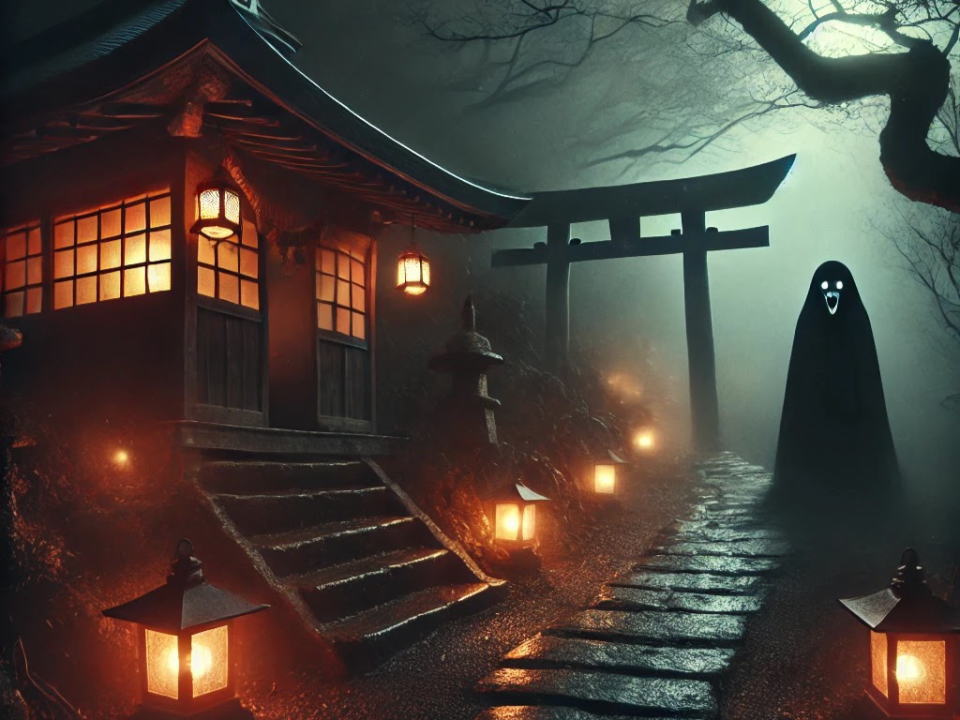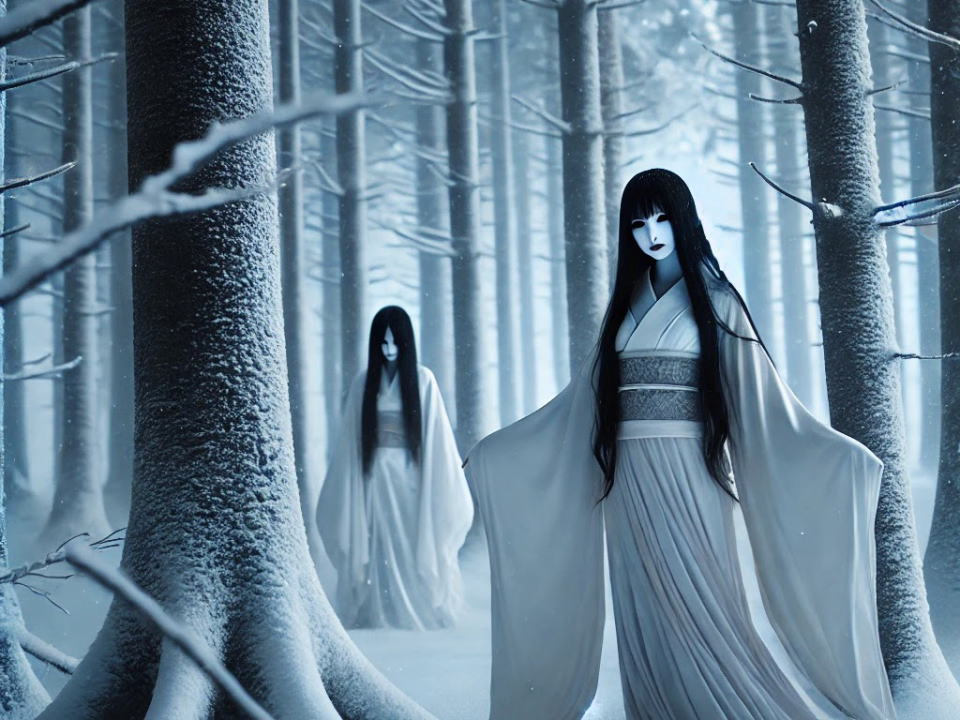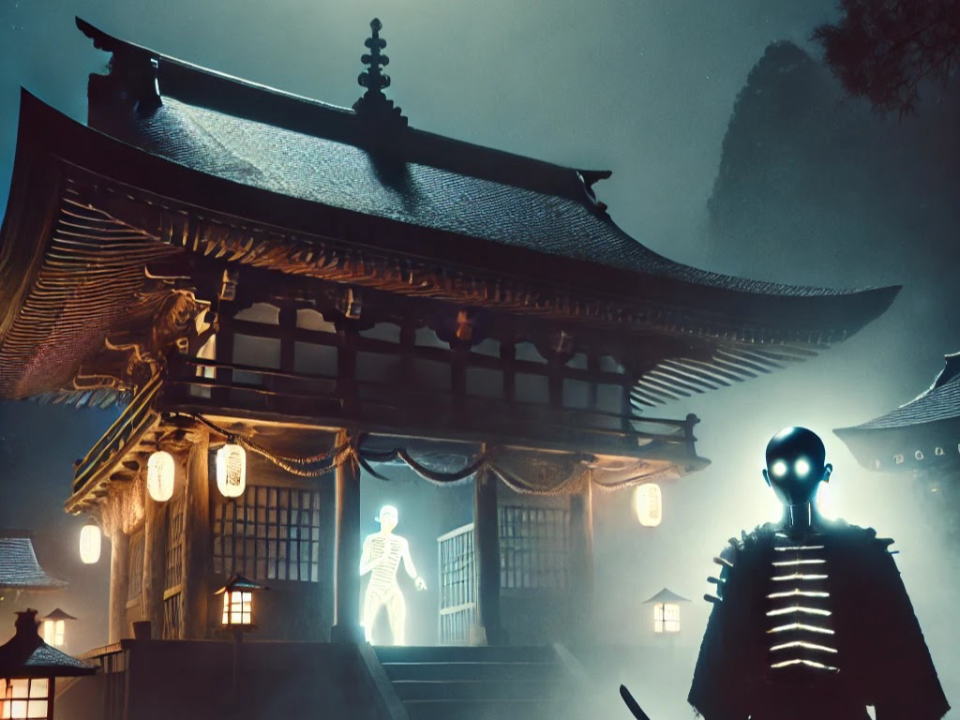
Lafcadio Hearn, also known as Koizumi Yakumo, was deeply fascinated by Japanese folktales.
He wrote many ghost stories based on these legends and traditional narratives.
His works were not merely translations or collections of folklore.
Instead, he reinterpreted and refined them into new literary pieces, making them accessible to Western readers.
This article explores how Yakumo’s ghost stories are connected to Japanese folktales, examining their similarities and differences in detail.
1. Why Yakumo Was Fascinated by Ghost Stories
Yakumo had a strong interest in different cultures and folktales from an early age.
He was born in Greece and raised in Ireland, both of which have rich traditions of myths and fairy tales that shaped his literary sensibilities.
During his time in the United States, he also encountered Creole culture and voodoo beliefs, which further deepened his interest in supernatural traditions.
However, what captivated him most was Japanese folklore.
Japanese ghost stories differ from Western horror in their sense of "quietness" and "lingering fear."
Rather than relying on shock, they create an atmosphere of psychological unease shared between the storyteller and the listener.
Yakumo was drawn to this unique style and sought to convey the spirit of Japanese culture through his ghost stories.
2. Similarities Between Japanese Folktales and Yakumo’s Ghost Stories

(1) Interaction with Supernatural Beings
Many Japanese folktales feature interactions between humans and supernatural entities, such as ghosts and spirits.
Yakumo’s stories strongly reflect this characteristic.
For example, in Yuki-Onna, a beautiful yet cold-hearted snow spirit encounters a human, while in Mimi-nashi Hōichi, a blind biwa-playing monk communicates with the spirits of the dead.
These themes align closely with Japanese folklore’s emphasis on contact with the otherworldly.
(2) Moral Lessons
Japanese folktales often contain moral teachings, such as "breaking a promise leads to punishment" or "evil deeds bring retribution."
Yakumo’s ghost stories also incorporate this element.
In Yuki-Onna, the protagonist loses his supernatural wife after breaking his promise, while in Mujina, reckless curiosity results in terrifying consequences.
These themes resonate with the didactic nature of traditional Japanese storytelling.
(3) Connection Between Nature and Mystery
Many Japanese legends and ghost stories are deeply intertwined with natural landscapes.
Forests, rivers, lakes, and mountains are often believed to be home to mysterious beings, making them natural settings for supernatural encounters.
Yakumo’s works reflect this influence.
For instance, Mimi-nashi Hōichi is set near a temple where the spirits of fallen Heike warriors roam, while Yuki-Onna is deeply tied to the harsh winter scenery.
In both cases, nature itself becomes a source of mystery and awe.
3. Differences Between Yakumo’s Ghost Stories and Japanese Folktales

(1) Literary Reconstruction
Japanese folktales were primarily passed down through oral tradition, with variations in their storytelling depending on the speaker.
Yakumo, however, transformed these folktales into structured literary works that were easier for Western readers to appreciate.
For example, Mimi-nashi Hōichi is based on Japanese legend but features Yakumo’s unique writing style, including vivid descriptions and a strong sense of tension.
His adaptations are not just translations but highly refined literary creations.
(2) An Intercultural Perspective
Yakumo approached Japanese ghost stories from a Western perspective, providing detailed explanations of cultural backgrounds that might not be obvious to Japanese readers.
For instance, in Yuki-Onna, he describes the harshness of Japanese winters and the daily lives of the people, allowing foreign readers to fully grasp the setting.
This intercultural viewpoint distinguishes his works from traditional Japanese folktales.
Conclusion
Lafcadio Hearn’s ghost stories are deeply connected to Japanese folktales, yet they are also distinct literary creations shaped by his perspective.
He preserved key elements of Japanese ghost stories, such as interactions with supernatural beings, moral lessons, and the connection between nature and mystery, while also making them accessible to Western audiences through careful literary reconstruction.
Through his works, Japanese folklore has reached a global audience and continues to be read by people around the world.
For those interested in exploring the rich traditions of Japanese ghost stories, Yakumo’s works serve as an invaluable gateway.
References
https://www.hearn-museum-matsue.jp/ (Lafcadio Hearn Memorial Museum)
https://www.kankou-matsue.jp/ (Matsue City Official Tourism Site)
https://www.jnto.go.jp/ (Japan Government Tourism Bureau)
